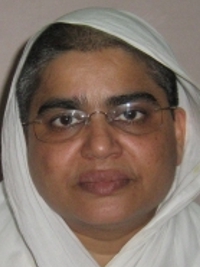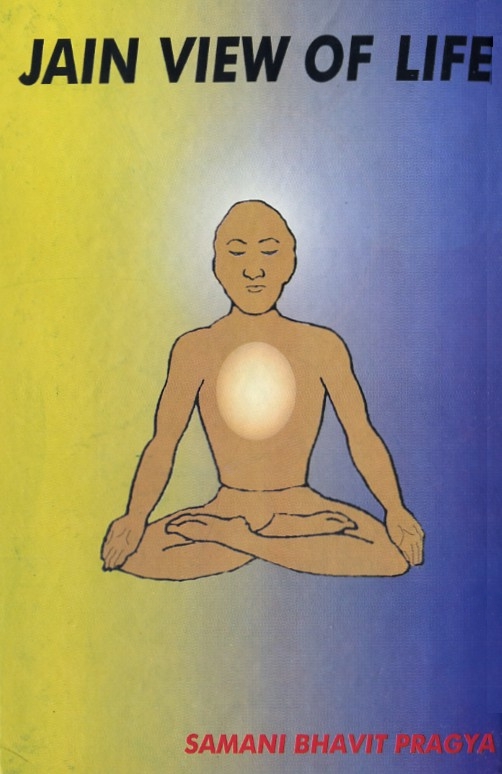Pranayama
Pranayama is the regulation and prolongation of breath. Prana is equated with breath, life force (vital energy), cosmic energy, etc., and Ayama signifies length, abstinence, and regulation. In Patanjali's words, after obtaining the steadiness of Asana, controlling the act of respiration is known as Pranayama. There are three main functions of pranayama - inhalation, exhalation, and retention. If the breathing is regulated, the mind becomes steady, tranquil, and peaceful.
Fundamental Functions of Pranayama
Inhalation (purak) enlarges the chest cavity. Fills the lungs with air, and moves the diaphragm downwards. Retention (kumbhak) distributes the energy throughout the body to every cell, muscle, and nerve. Retention increases the level of carbon-dioxide in the blood, increasing internal temperature. As a result, metabolism is assisted and increased oxygen absorption tones up body tissues. Exhalation (rechak) throws away all the toxins, impurities, and poisons from the body due to contraction of the intercostal muscles and the diaphragm.
Beginners should breathe on a ratio of 5:5:5 which means they should inhale for five seconds, retain for five seconds, and exhale for five seconds. With practice, they should eventually reach a ratio of 5:20:10; five seconds for inhalation, twenty seconds for retention, and ten seconds for exhalation. While practicing Pranayama, a person can simultaneously practice bandhas; after breathing in, let the chin drop to touch the throat cavity (jalandhar bandha) and pull the anus upwards (mool bandha). Before breathing out, first relax the jalandhar bandha, then the mool bandha, and perform uddiyan bandha (contracting the abdominal muscles) while exhaling completely.
Ayurvedic Perspective
The entire system of the human body is governed by three doshas, wind (vata), bile (pitta), and phlegm (kapha). The primary working area of all three doshas is for the most part concentrated between the heart and the navel where the stomach, duodenum, liver, pancreas, spleen, kidney, colon, etc., are located. This most important portion of the body is responsible for digestion, assimilation, and distribution of nutrients. Wind controls the activity and movement of the human being. Bile controls the entire digestive system. Phlegm moistens and lubricates the joints and other body systems which helps in keeping the body clean, pure, and undisturbed. Wind keeps the whole system alive. It is a very potent fact that body air has the quality of changing its nature with changes in temperature, and, by controlling breath, one can regulate all the forces of the universe such as gravity, electricity, nerve currents, etc.
Yogacharya's Perspective
Prana is energy; it cannot be divided, but for the purposes of governing life, the Acharya of yoga has been divided into five forces called pancha prana - Prana, Apana, Saman, Udana, and Vyana. All have different manifestations and distinct functions as follows:
Prana moves between the larynx and thoracic region. It activates respiration, heart, and lungs.
Apana circulates in the lower abdomen between the navel and the rectum which includes the large intestine. It throws out urine, feces, toxins, and waste materials. It controls and provides energy to the liver, stomach, heart, excretory system, etc.
Samana works between the heart and navel center. It stimulates and activates the digestive system.
Udana passes between the regions of the head and the thorax. It activates the eyes, ears, nose, brain, etc.
Vyana pervades the whole body. It distributes energy to all the cells, muscles, and nerves. Through Vyana, the whole body functions in a right and proper manner.
Jain's Perspective
Prana is considered to be bio-energy. Through bio-energy the attributes of soul (knowledge, bliss, and power) can be recognized. Prana is the basis of all life. It is the subtle energy which works in each and every cell, muscle, nerve, and organ. Respiration (Pranavayu) goes to the lungs and helps in the purification of the blood.
Benefits of Pranayama
Pranayama helps to develop intensity of concentration, clarity of thought, and a dynamic personality. It brings out the most constructive power latent in a person. In Patanjali's words "Tatah ksheeyate Prakashavarnam" which means it removes restrictions to illuminated consciousness. A great Acharya Mahapragya says, "it is not only an exercise of respiration but it is a significant technique of dissociating karma. So as to burn impure particles, fire is needed; similarly, for burning impurity of the sense-organs, it is very essential to practice Pranayama".
Requirements of Practicing Pranayama
Pranayama should be practiced in an open place free from odours, dust, insects, or any other kind of disturbing factors.
Early morning from 4:00 to 7:00 AM is the best time to practice Pranayama when the mind and the atmosphere is calm, cool, and pleasing.
Wear light, loose, and clean clothing Always breath in and out through both nostrils. In the beginning the duration may be short after which it can gradually be increased.
Pranayama should be practiced 3 to 4 hours after a meal when the stomach is empty and half an hour after taking a glass of juice.
Several different types of Pranayama are:
 Samani Bhavit Pragya
Samani Bhavit Pragya
